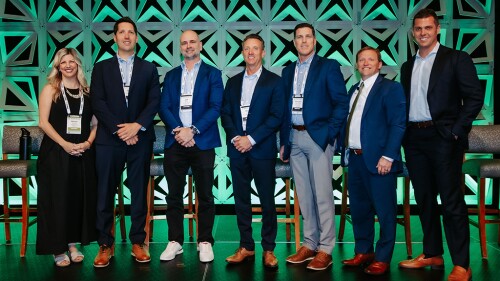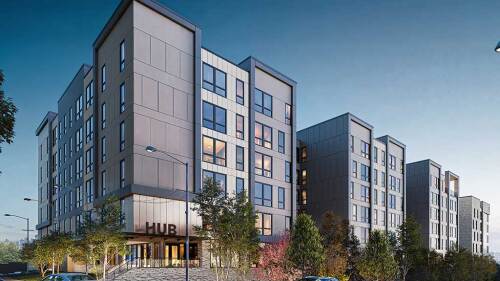“Small is beautiful,” that glib 1970s catchphrase, today could be applied to the “maker movement” that is helping transform dilapidated urban industrial zones throughout North America. From Detroit-based Shinola to craft breweries, artisanal food producers, and bespoke jewelry crafters nearly everywhere, modern small-scale manufacturing is breathing new life into long-abandoned warehouses and factories.
In a 2015 ULI Fall Meeting session moderator Ilana Preuss of Recast City remarked that it’s “cool to make stuff again.” Small-scale manufacturers are creating jobs with minimal educational requirements and wages that are double those in the service and retail sectors. “They are bringing life to the streets, tapping local power, helping economic resilience, and increasing the value of surrounding properties,” she noted.
The new maker movement is having a significant impact in postindustrial Midwest cities like Indianapolis, which has lost some 18,000 auto manufacturing jobs and caused some 8,000 families to abandon their homes. Indiana University’s Adam Thies, who worked until recently as the city’s director of metropolitan development, described the ongoing redevelopment of the Circle City Industrial Complex (CCIC). This 500,000-square-foot (46,500 sq m) structure was built during the 1920s to house the Schwitzer Corporation, an auto parts manufacturer. After the plant closed in the 1960s, parts of it were repurposed to accommodate nonindustrial uses.
“When you are not located in a hot market, you have to be creative,” said Thies. “We are filling this building with cool things like manufacturing and food production—the things we used to be really good at.” The complex already is home to about 60 tenants, including artist and design studios, businesses, nonprofit groups, and makers. One of those is RecycleForce, providing innovative recycling services and workforce training to formerly incarcerated individuals.
The city of Indianapolis, Thies went on, is using community development block grants to help revitalize the sprawling building’s vacant southern section. The new area will include a large-scale maker called Ruckus, a membership-based maker space where inventors, designers, artisans, photographers, craftspeople, and engineers can share equipment, technology, and ideas to help launch their next creations. For the rest of the space, CCIC hopes to recruit existing area businesses that are ready to expand. Part of the structure will be demolished to provide additional tenant parking. “The ’60s through the ’80s are over,” Thies declared. “We need to ride the new tidal wave.”
Industrial space redevelopment is not just a priority for cities in the Midwest, however; it is also key to the revitalization of booming coastal cities. In San Francisco, Forest City Enterprises is in the beginning phases of redeveloping a 28-acre (11 ha) section of Pier 70, a former shipyard on the city’s southern waterfront. During World War II, explained the company’s Alexa Arena, more than 18,000 people per day worked at the pier. The area was packed with buildings up to 92 feet (28 m) tall. In 1972, as part of a citywide planning code amendment, the site was downzoned to permit buildings no taller than 40 feet (12 m), assuming continued industrial use. But as the shipbuilding industry declined over the last 60 years, the site became what it is today: a mix of vacant land, deteriorating buildings, storage, and staging areas that restrict public activity and waterfront access behind chain-linked and barbed-wire fences.
Last year, city voters overwhelmingly approved a ballot initiative (Proposition F) raising the height limit on Forest City’s property to 90 feet (27 m). The approved plan allows Forest City to construct a combination of commercial buildings and housing, with 30 percent of the planned housing units designated affordable; 25 percent of the site will be set aside as open space.
The company spent three years interacting with the adjacent Dogpatch neighborhood during its early planning process, Arena explained. There were dozens of events, open houses, and focus groups, with thousands of participants. “We looked at how work and residential life are changing—a shift from the formal to the social informal type of space that we see in urban retail.”
Although the project is now in environmental review, Forest City already has begun activating the site, hosting a series of community events including an open-air arts and makers market that recalls the site’s industrial past. In addition, Forest City activated one of the site’s historic industrial buildings and gave it to the city for arts uses.
A similar industrial waterfront evolution is taking place in Vancouver, British Columbia, as explained by Juvarya Veltkamp of the Vancouver Economic Commission. The difference is that Vancouver has lost 50 percent of its industrial land to redevelopment and is set to run out of industrial space in just a few years.
So the city has turned its attention to False Creek Flats, a 300-acre (121 ha) site with 325 existing buildings, representing 15 percent of the city’s industrial land. Originally a marshy tidal flat with rich fishing grounds, the flats were filled with debris and industrial waste by the late 1800s. In the early 20th century, railway companies built up the area with new land, and industrial development took off. Today, despite lingering contamination and flooding hazard, False Creek Flats is home to a digital media cluster, an extensive food distribution network, a textile industry, and more. With both private and public sector participation, Vancouver wants this area to become the “greenest place to work in the world.”




